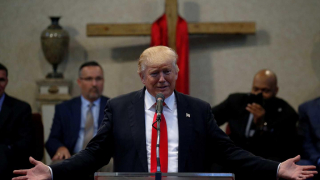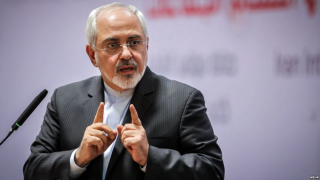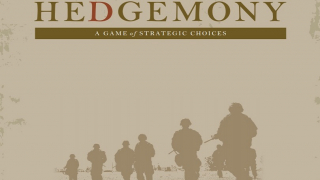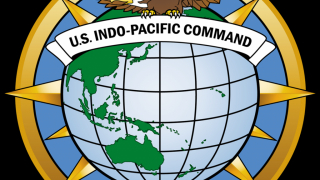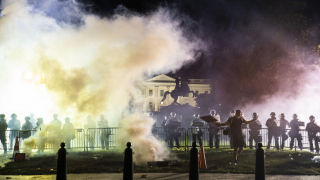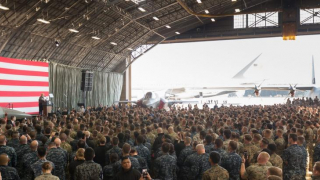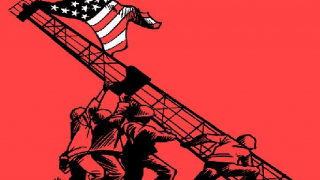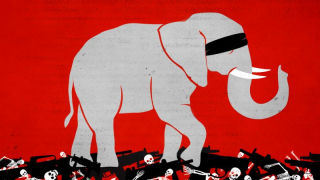More Enemies for the well-being of the U.S.
25.12.2017
New U.S. Strategy of National Security was presented
On Monday 18 December 2017, the new national security strategy of the US was officially presented. Less than three years have passed since the presentation of its forerunner in February 2015 under the Obama administration, which is telling of the haste of the White House’s new lord of the manor and the military lobbyists surrounding him. The latter put in a special effort, as the 68-page text is deeply impregnated with the spirit of war. If in the US Army field command it is said, that “war is waged during conflict, after its conclusion and during peacetime in the relations between enemies, friends, and neutral forces”, then this formula can also be applied to the new strategy, even if it is not expressed directly.
However, direct references are made to American exceptionalism: “This national security strategy puts the US first. The national security strategy is, above all else, founded on American principles, a correct assessment of US interests and a decisiveness willing to solve the problems we are facing. It is a strategy of principled realism which is led by results, and not by ideology. It is based on the idea that peace, security, but also prosperity rely on strong, sovereign nations, which respect their citizens at home and work together for the advancement of peace abroad. And it is rooted in the recognition of the fact, that American principles are a strong force for good in the world.” There are also mentions in the preamble of ‘God-given rights and freedoms’ and that ‘American power should not buckle to challenges and should be self-sustaining’. Here we see a continuity with Obama’s document, which said that “American leadership consists of the global forces of good, which are based on our firm national interests and which were outlined in the last Strategy”, but there is also something new here.
Realism is the theory of international relations which was always followed by American military personnel, and it tells us that each country has its interests and that they must be respected. American political scientists also created a concept of offensive and defensive realism. However, principled realism is a new concept from the arsenal of the Trump team.
It has practically been announced that Washington is ready to limit, and not respect, the interests of other countries if they are not to the US’ liking in some way or another. Moreover, America is ready to close its eyes to ideological considerations and to destroy possible opponents, because free trade and the prosperity of other countries is, after all, only possible with the agreement of the White House!
It is necessary to mention this. “The competition between great powers, which disappeared in the last century, has resurfaced”… “This competition requires the US to reconsider its policy of the last two decades, a policy based on the assumption that cooperation with opponents and their inclusion in international institutions and global trade will transform them into benevolent participants which deserve the trust of their partners”.
It is true that the American mass media mainly turned their attention to the fact that the strategy is focused on economics. If there is mention of military measures, they are to be used so that the US may prosper further.
However, there are, of course, statements about the necessity of “rejuvenating the American economy” in order to strengthen US economic power, the carrying out of a tax reform, the lowering of the US national debt, the rebuilding of internal infrastructure (roads, railways, airports, telecommunications etc.), and the launch of educational programs.
Thus, the New-York Times has written that “The US is locked in conflict with two revisionist powers, China and Russia, who want to change the global status quo, often to the detriment of American interests… Although the document presents a detailed plan, geared towards clipping China’s global economic ambitions, it says little about the methods of cyber-informational warfare, through which Moscow tried to influence the 2016 presidential election”.
The Washington Post focuses attention on Trump’s attempt to strengthen the role of the military and to spread its influence on a global scale.
The publication Stars and Stripes cites Trump’s national security advisor McMaster, who presented the strategy the day before. According to him, the strategy is based on four interests: the protection of American citizens, the spread of American prosperity, “keeping the peace through force”, and the spreading of American influence. Among the main threats indicated are Russia, China, Iran, and the DPRK. McMaster says that Russia threatens the US with a “so-called next-generation war”, the method of which, according to the American military, includes interference in the US presidential election campaign in 2016. China is condemned for ‘economic aggression’ and is called a ‘strategic competitor’, which speaks volumes about the difference between this strategy and the last, the former of which considered Beijing a partner in the battle against global threats, from Iran’s nuclear program to climate change. And seeing as it is now impossible to ‘hang’ a nuclear dossier on Iran, it is now guilty of “destabilizing activities in Syria and the Middle-East”.
The term ‘pre-emption’ is used in the strategy. Add to this the context of strained relations with North Korea, and it should come as no surprise that the mass media took it as a point of discussion.
Considering the fact that McMaster had earlier spoken about the failure of sanctions and diplomacy towards Pyongyang and the possibility of preventative military force or a pre-emptive strike, this term looks like nothing other than a sinister attempt to build the next conflict on questions of national security.
Alongside sovereign states, jihadist terrorist organizations such as ISIS and Al-Qaeda (banned in Russia) are mentioned as threats. In the context of the defense of US national borders, these groups are mentioned along with China, Russia, and the DPRK as groups that “are producing advanced weaponry and are looking for possibilities with which to threaten our critical infrastructure”. Separate focus is accorded to migration policy, which was missing in the Obama document.
One of the sections is dedicated to the security of the innovation base of US national security. Here, any foreign power which invests in promising sectors of the US economy is enough to arouse suspicion; China takes the brunt of the accusations. In the same section, it is mentioned that US visa procedures will be reconsidered and sharpened.
In contrast with the strategies of his predecessors, Trump does not name climate change as a threat to national security. This theme appeared in the section on energy dominance, in which US leadership is called “indispensable” for the coming world.
Interesting statements can be found in the relations between the US and its partners. It is said that “our allies and partners who are combatting terrorism alongside us keep sharing responsibility for the struggle with these barbaric groups”. One gets the idea that the White House did not even attempt to ask its partners what they thought about this question and how, exactly, they are planning to share responsibility, but that it instead decided the question for them, thereby having made clear to the rest of the world that Washington calls its satellites and servants allies and partners.
It is also mentioned that the US had earlier curtailed military activities instead of developing them. Therefore, it is necessary to modernize the armed forces (especially nuclear weapons and related infrastructure), find new methods of procurement to avoid unnecessary delays, achieve combat readiness, and retain the full spectrum of capabilities of deterrence and aggressive action against all threats be they on or in land, sea, air, space, and cyberspace.
As far geographic regions are concerned, the focus is on Europe, the Indo-Pacific space and the Middle East. Instability and weak governments (that is, those not satisfying American standards of democracy) are named as threats to US national interests. In the document a wager is made on several forces which are supposed to help the US. For the Asian region New Zealand, India, Japan, Australia, Thailand, South Korea, and the Philippines have been chosen. Paradoxically, only NATO is mentioned as a key security partner in the description of Europe, but the EU and Great Britain are noted as partners on economic questions. As concerns the Middle East, the US “will support states in the region, including Egypt and Saudi-Arabia”.
Of course, Russia is accused of involvement in the Ukrainian crisis, and China is not only condemned for provocations in the South-China Sea, but also for activities on European territory. Mention is made of future pressure on Pakistan. In the Western hemisphere, negative judgements are passed about Venezuela and Cuba due to political particularities, but also about Guatemala, Honduras and El-Salvador because of the ongoing violence and corruption in those countries. Africa gets slightly over a page (China is once again mentioned), which is indicative of the priorities of the current White House administration as far as that continent is considered.
It is necessary to view the preparation for the publication of the new strategy in relation to other recent decisions. We will list them in short.
On 12 December Donald Trump signed the US military budget. In comparison to last year it grew by 2.4% and amounts to almost 700 billion dollars. 66 billion will be dedicated to the execution of operations abroad; another 66 will be spent on the improvement of the US anti-missile defense system. The army, marines, a new interceptor, and Virginia-class submarines will be part of the modernization program. Congress must either accept the budget or propose a new one before December 22.
At the same time, NATO announced that the alliance would begin with an unprecedented enlargement of the cyberwarfare budget in order to confront Russia, China and North Korea. To do this, a command structure will be adapted and cyber weaponry will be integrated into the order of battle. The NATO general secretary, Jens Stoltenberg, announced this in a press conference on 8 November.
On 14 December the Federal Communications Commission voted in favor of the abolition of net neutrality. From now on Internet access will be sold at high prices and nobody, be they rich or poor, a large corporation or small business, a multimedia conglomerate or a small online newspaper, will have the same access. Supporters of freedom of speech in the US have already called this precedent a historic mistake and are preparing to prevent the passing of this decision in Congress by any means necessary. Actually, the question is more serious than simple Internet access, as the abolition of net neutrality means harsher control of traffic and the possibility of government interference. Under the noise about unproven interference in the 2016 elections through cyberspace, the screws have been tightened in the US, but only for the country’s own citizens. .
In this context, also of interest is the prognosis of global conflicts in 2018, which has been prepared by the Centre for Preventive Action and the Council on Foreign Relations. Judging by the map provided with the report, the largest threats to the US will come from Russia, China, Turkey, the Korean peninsula, Syria, Iran, Afghanistan, practically the whole of Europe, several states in South-Eastern Asia, and from the US itself (in the form of crises and instability).
Finally, it must be noted, that in the beginning of 2018 four more important documents will see the light of day in the US. These are the National Defense Strategy, the Nuclear Policy Review, the National Bioweapons Strategy, and the Anti-Missile Defense Review. It is expected that similarly tough formulations and a similar stress on American exceptionalism will appear in these documents.
Translated from Russian by V.A.V.


